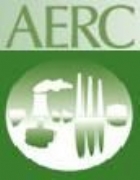 Add My Company
Add My Company
Sign In
Benzo(a)pyrene Research
01-01-2006

One of the key contaminants identified by CLEA is Benzo(a)pyrene (BaP), a polycyclic aromatic hydrocarbon which commonly results from the burning of organic matter. The use of the CLEA model gives a SGV for areas where plants are to be grown i.e.; private gardens, of around 1mg/kg depending on the soil type. AERC has recently undertaken a study into the levels of BaP in garden areas throughout Essex, Suffolk and East London. Staff were asked to bring a sample of their garden topsoil to be analysed for BaP. A total of 45 samples were obtained from places as far apart as Buntingford, in Hertfordshire, to Felixstowe, in Suffolk. Information was also collated on the location and history of the property. The oldest houses in the survey (and hence gardens) date back to the early 16th Century with the more modern being no more than a few years old.
The results were unexpected especially as levels of BaP between 0.5mg/kg to 10mg/kg were found in garden soils. In addition to the garden samples, a sample of a proprietary garden compost bought from the local garden centre was also analysed. This contained a level of BaP of 25mg/kg.
When compared to the CLEA SGV of 1mg/kg, two-thirds of staff gardens would be classified as contaminated and the compost would actually be classified as hazardous waste under Waste Acceptance Criteria.
The results of the survey has lead AERC to identify its own Risk Assessment Value for BaP of 5mg/kg for areas where plants are to be grown.
For more information on Benzo(a)pyrene Research talk to AERC Ltd
Enquire Now
List your company on FindTheNeedle.
